Are you thinking about hatching chicks in the classroom with your students? This post will show you how to get started!
I love hatching chicks with my class each spring! It is probably the most memorable thing we do all year and it’s such an amazing learning experience for them.
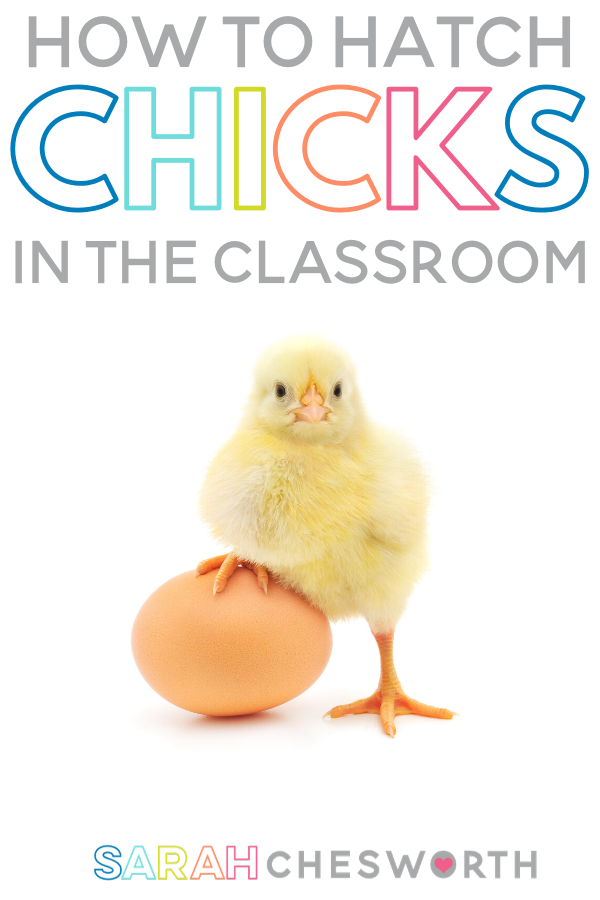
I always get the question, “How do I hatch chicks with my students?” So I I decided to dedicate an entire post to hatching chicks in the classroom. I hope this helps convince you to try this with your class this spring.
This post is organized in a question-and-answer format. If I didn’t answer your question about hatching chicks, please leave it in the comments below!
What supplies do you need to hatch chicks?
Here are a few of the most common supplies you will need for hatching chicks in the classroom:
- An incubator, I have had the best luck with this one!
- An egg candler (this isn’t really a necessity, but it’s so cool to see inside the eggs)
- A large bucket for the chicks to stay in after hatching, The first few years I just used a large plastic bucket, but then I invested in a large feeding bucket so the chicks had more room and more kids could crowd around.
- Chick Food
- Chick Feeder and Waterer
- Brooder to keep the chicks warm, this can be tricky with fire codes, etc. This was the best option for me!
- Pine Wood Shavings for the chick’s bedding
- An incubator, I have had the best luck with this one!
- An egg candler (this isn’t really a necessity, but it’s so cool to see inside the eggs)
- A large bucket for the chicks to stay in after hatching, The first few years I just used a large plastic bucket, but then I invested in a large feeding bucket so the chicks had more room and more kids could crowd around.
- Chick Food
- Chick Feeder and Waterer
- Brooder to keep the chicks warm, this can be tricky with fire codes, etc. This was the best option for me!
- Pine Wood Shavings for the bedding
Before you buy anything out of your own pocket, be sure to check with the science department in your district. Often times they will have supplies that you can borrow or they may even have funds available for purchasing them!
Supplies for chick hatching can be found at most feed stores too! Don’t be afraid to play your teacher card too. Many local businesses are happy to support educators trying to bring special experiences to their students.
Where do you get the supplies needed to hatch chickens?
If you have never hatched chicks before I highly recommend reaching out to your local 4-H. Often they have the supplies that they can let you use!
Don’t forget to reach out to your district science department to see what materials they might have available for you too.
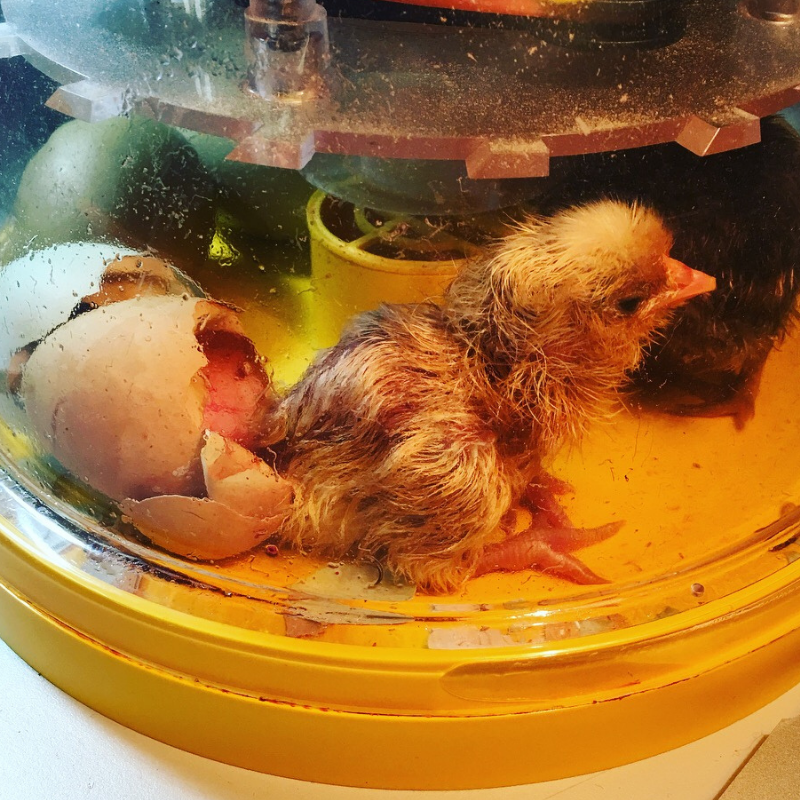
You could also write a grant using a website like Donors Choose or see what grants are available in your district.
Where do you get the fertilized chicken eggs to hatch?
Start with reaching out to the local 4-H office! They have always been happy to help me find the fertilized eggs to use for hatching with my students. I have also joined local Facebook Backyard Chicken groups and connected with people who have fertilized eggs that way too!
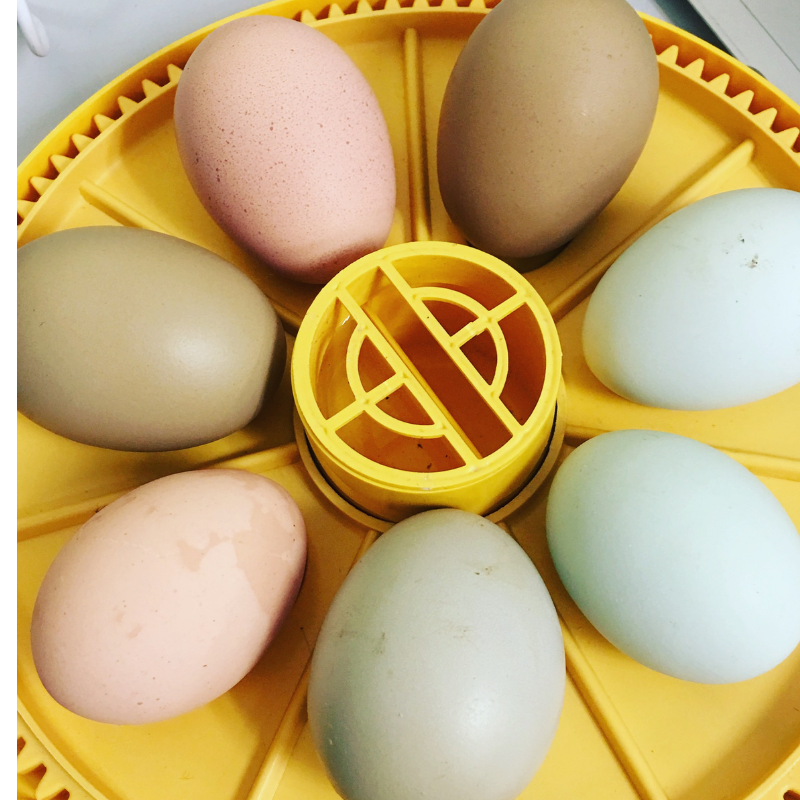
One year I also found fertilized chicken and duck eggs on Craigslist! Over the years I have gotten the eggs from a few different places! I recommend asking around! Many of the farms that I have gotten the fertilized eggs from will also take the chickens back.
Quick side note,I have not had as much luck with hatching ducks as I have had with chickens! But, it’s really fun to compare ducks and chicks!
How long does it take chicken eggs to hatch?
It takes 21 days from incubation for chicken eggs to hatch. It helps time pass quickly having something fun to look at. I absolutely love these Chicken Life Cycle Eggs. Each day you open an egg to see what your chicken looks like inside that day!
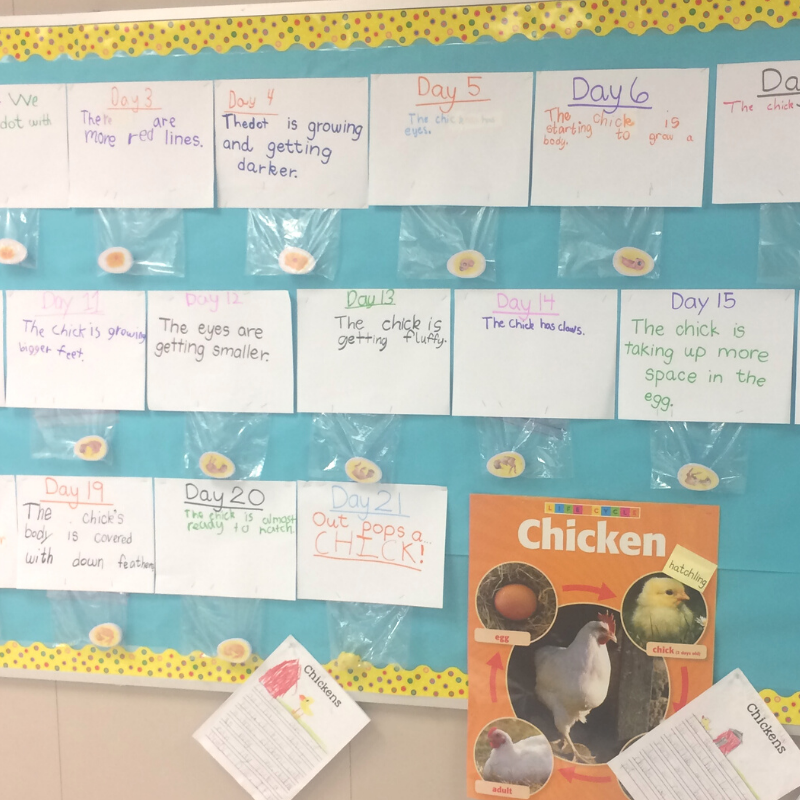
What do you have to do during the incubation of chicken eggs?
Mostly, just keep an eye on the levels! I watch the temperature and humidity levels closely. Both of these levels will need to be increased closer to that hatch date!
If you don’t get an incubator with an automatic turner, you would have to turn the eggs a few times a day which can be a pain so you definitely want to get a self-turning incubator.
Your incubator will come with very specific directions about all of this. I candle the eggs every few days and keep the incubator in a safe place to make sure it isn’t knocked over or touched. I also highly recommend talking to your school custodian and anyone else who might be in your classroom so they know not to unplug the incubator!
How long do you keep the chicken in your classroom after they hatch?
Definitely, no more than two weeks! You will be absolutely amazed at how quickly they grow.
How do you teach about the chicken life cycle?
First of all, we read tons of books about the chicken life cycle. Here are some of my favorites:
We also do lots of chicken research and writing activities!
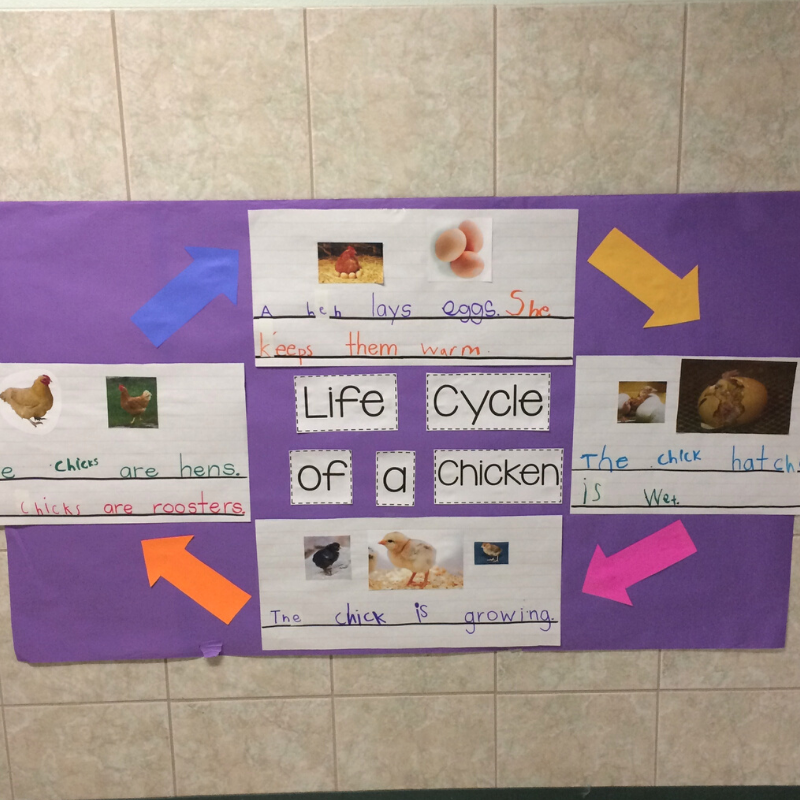
Students also enjoy making their own chick crafts too! Students can make this simple chicken life cycle craft!

Younger students may enjoy a chick labeling craft. You can always add additional writing to the crafts too!
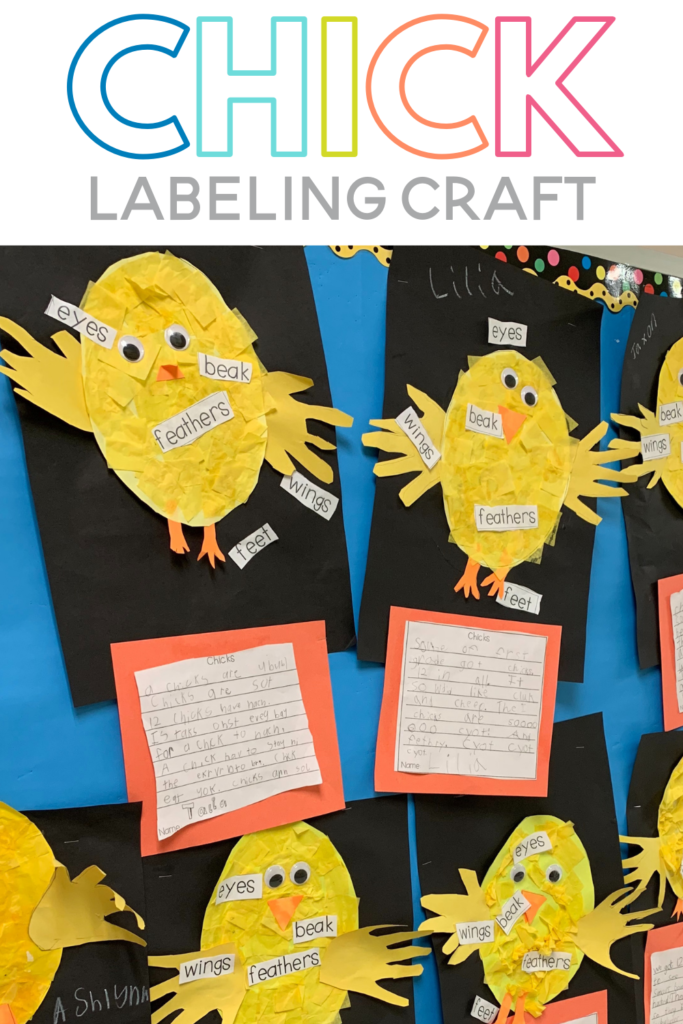
What do you do with the chicks on the weekends?
Honestly, I run by my school on both Saturday and Sunday to make sure everything is good! It usually only ends up being one to two weekends that I have them, so it’s not too bad! You could totally take them home too. I just always worry about my dogs thinking they could be a snack.
What do you do with the chicks after they hatch?
This is is one of the most important things to think about and you must have a plan in place. Chicks quickly turn into chickens! ALWAYS secure a home for the chick before hatching them!
Ask around, email parents, contact your 4-H local 4H, local farmers…I always ask the person who gave me the eggs too. Even if they aren’t interested in taking them back, they often have connections!
Other Tips for Hatching Chicks in the Classroom:
- Include other students and teachers in the experience. This is about the kids!
- Take the learning deeper by comparing chicks to ducklings.
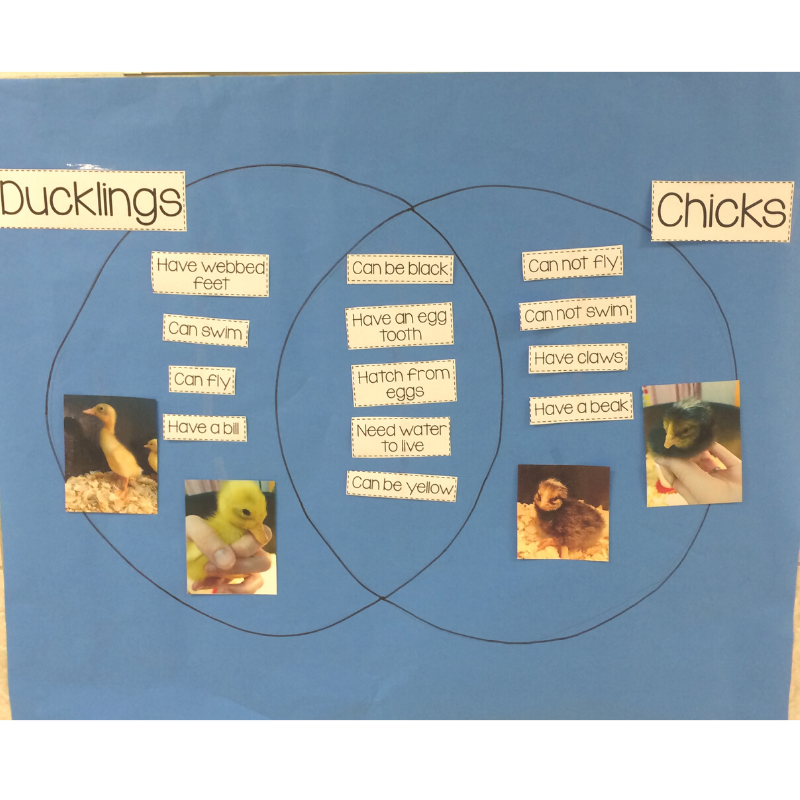
I hope this post has encouraged you to try hatching chicks in your classroom!

